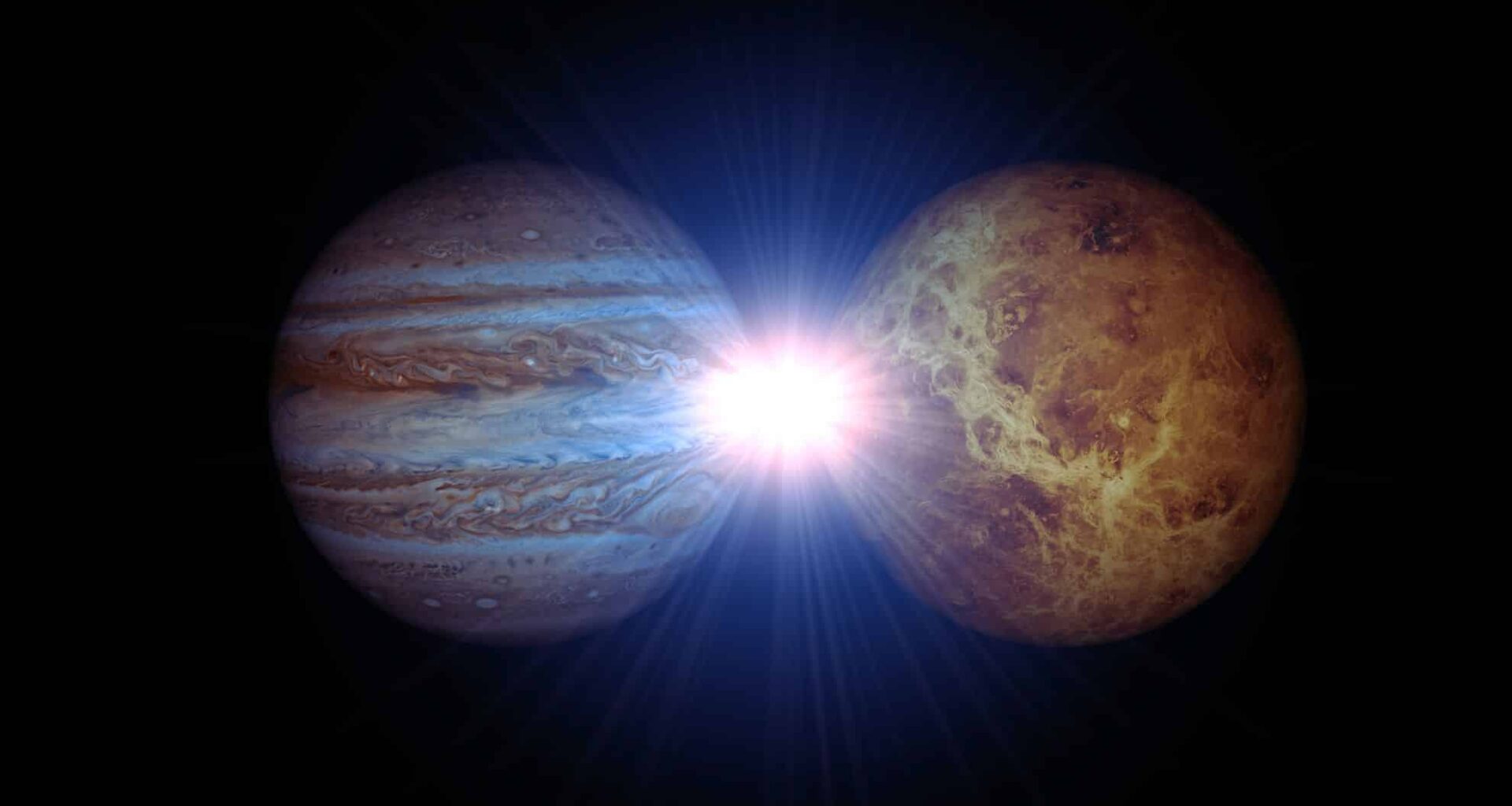As August unfolds, skywatchers are in for a rare treat — the brilliant conjunction of Venus and Jupiter. These two celestial giants will come incredibly close to each other in the early morning hours of August 11 and 12. This event, reported by SciTechDaily, will present an awe-inspiring sight for those fortunate enough to catch the planets’ dramatic alignment, appearing just one degree apart in the eastern sky before sunrise. But the wonders of August don’t stop there — the Perseid meteor shower, the Dumbbell Nebula, and the continual movement of Mars and Saturn also promise exciting opportunities for amateur astronomers. Whether you’re an avid stargazer or a casual observer, this month’s cosmic events are not to be missed.
Venus and Jupiter: A Spectacular Celestial Alignment
On August 11 and 12, Venus and Jupiter will appear remarkably close to one another, offering a sight that’s both stunning and rare. As two of the brightest planets in our sky, their conjunction is an event that won’t soon be forgotten. These two planets, often visible to the naked eye at different times of the year, will align just one degree apart, making their appearance one of the closest in recent memory. Such planetary pairings happen infrequently, adding a touch of magic to the skies of late summer.
To observe this event, look towards the eastern horizon just before sunrise. Venus, often known as the “Morning Star,” will shine intensely, while Jupiter will appear dimmer by comparison, but still a striking sight. The backdrop of constellations like Orion, Taurus, and Gemini will only enhance the visual drama, creating an unforgettable experience for skywatchers. This alignment is a perfect moment for those who have always wondered what it’s like to see two planets dancing in the same part of the sky, and it’s an excellent opportunity for photography or simply marveling at the beauty of the cosmos.
The Moon’s Role: Impacting Meteor Viewing
While the conjunction of Venus and Jupiter is the highlight of the month, it’s not the only event that will capture the attention of skywatchers. The Perseid meteor shower is another eagerly anticipated event in August. However, this year’s shower will face some challenges in terms of visibility. With the Moon nearing its 84% full phase on the night of August 12 and 13, its bright light will obscure the faint meteors, making it difficult to fully appreciate the Perseid meteors. Although some of the brighter meteors may still be visible before dawn, skywatchers will need to contend with this interference from the moonlight. Despite this, the Perseids remain one of the best meteor showers to observe, and many will still attempt to catch a glimpse of the meteors that light up the summer night skies.
Skywatching in August: Other Celestial Highlights
August offers a smorgasbord of other celestial delights that will ensure there’s always something to observe, even beyond Venus and Jupiter. The movement of Mars and Saturn throughout the month promises to offer exciting opportunities for stargazers. Mars, which shines brightly in the western sky for about an hour after sunset, can be found roughly as bright as some of the most prominent stars in the Big Dipper. As the month progresses, the Ringed Planet, Saturn, will rise earlier each night, providing opportunities for those who prefer late-night or early-morning stargazing. It will be positioned high in the southern sky as sunrise approaches, allowing observers to witness its stunning rings and moons.
Beyond the planets, the Dumbbell Nebula (M27) is another exciting target for telescopic observers. Known as one of the easiest-to-see planetary nebulae, it lies within the Summer Triangle constellation and is visible high overhead in the first half of the night. The nebula is a remnant of a star similar to our Sun, which exploded and shed its outer layers, leaving behind a hot white dwarf. This celestial object offers a glimpse into the future of our own Sun, showing how it will eventually fade into a white dwarf and create a nebula of its own.
The Importance of Skywatching: A Window Into the Universe’s Mysteries
Skywatching is more than just an occasional hobby; it’s a way to connect with the vast, mysterious universe around us. Events like the Venus-Jupiter conjunction or the viewing of nebulae such as M27 provide a moment of awe and reflection. For those interested in the science behind these cosmic phenomena, it’s a chance to explore the forces that shape our universe, from the life cycle of stars to the distant worlds in our own solar system. Observing the alignment of Venus and Jupiter, for instance, is not just an aesthetic experience — it also highlights the gravitational dynamics and orbital mechanics that influence planetary motion.
When to Watch: Best Times for Viewing
To get the best view of this rare event, early risers should set their alarms for the days surrounding August 11 and 12. The planets will be brightest just before sunrise, so timing is key. Finding a location away from the city lights will also improve visibility, as the light pollution from urban areas can wash out the view of the planets. You can also use apps or websites to help you pinpoint exactly where to look in the sky. For those hoping to take photographs, a tripod and manual settings on your camera will help you capture the stunning celestial alignment.
